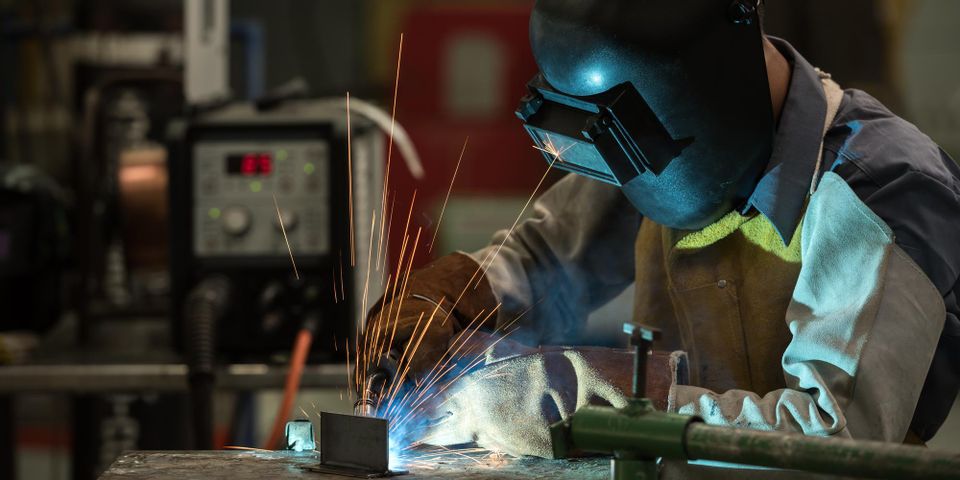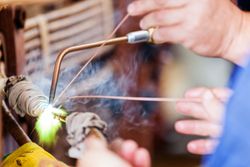
The words “welding” and “brazing” are sometimes used interchangeably, but in reality, they are two separate techniques welders use in metal fabricating. While both are effective in permanently joining metal parts, the process and applications behind each vary. Here’s a look at the key differences between the processes.
What Does Welding Entail?
The welding process involves melting metals and fusing them together using a concentrated heat source aimed directly at the joint, usually with the addition of a filler metal. In this process, known as fusion, metals must be of a similar composition and melting point. Otherwise, one metal will melt before you reach the melting point of the other.
Welders must use very high temperatures in order to exceed the melting points of both pieces. This creates a pool of molten material, which cools to form a joint. Welded joints are typically stronger than the base metals.
Welding is the more common of the two techniques. The localized heat used in this process makes it well-suited for joining larger assemblies since there’s a tendency to dissipate heat applied over broad areas. This pinpoint accuracy is also useful in joining two small strips of metal at a single point. Welding has a wide range of applications, including construction, manufacturing, repairs, and transportation.
What Is the Brazing Process?
 Brazing utilizes lower temperatures because the goal is not to melt the base metals. Instead, fabricators melt the filler metal, which has a lower melting point than the base metals. Rather than fusing the metals, brazing works on a principle known as capillary action: the ability of a liquid to flow through narrow spaces without the assistance of external forces like gravity.
Brazing utilizes lower temperatures because the goal is not to melt the base metals. Instead, fabricators melt the filler metal, which has a lower melting point than the base metals. Rather than fusing the metals, brazing works on a principle known as capillary action: the ability of a liquid to flow through narrow spaces without the assistance of external forces like gravity.
When the filler metal flows into the joint between the base metals, it creates a metallurgical bond. Like welded joints, brazed joints are generally as strong as or stronger than the base metals.
One of the top advantages of brazing is that it can join dissimilar metals. While different metals, such as copper and steel, have varying melting points that make them difficult to weld, brazing only needs to melt the filler material. As long as the filler metal has a lower melting point than the base metals, fabricators can choose the best materials for the project, regardless of variations in melting temperatures.
Brazing also allows for greater control. Intense, localized heat creates joints that are irregular in appearance. In consumer industries, welded joints must receive a secondary finish to improve their look. Brazed joints are cleaner and almost always come out market-ready.
For welding and brazing projects that require an expert hand, you can rely on M & M Welding & Fabrication. Serving High Point, NC, and surrounding areas, these welders offer superior metal fabricating services using cutting-edge equipment and proven techniques. No project is too big or small for their highly trained team, so call (336) 885-9353 today to schedule an estimate. Learn more about available services, including custom metalwork and machinery repair, online.
About the Business
(26 reviews)
Have a question? Ask the experts!
Send your question

